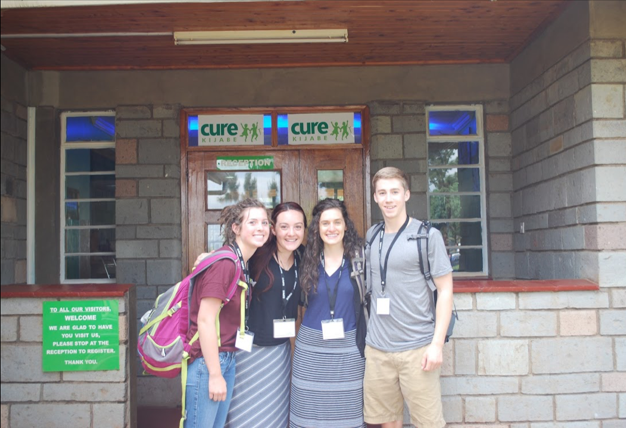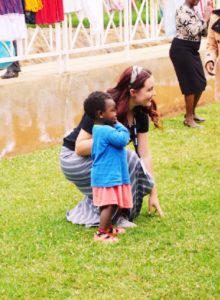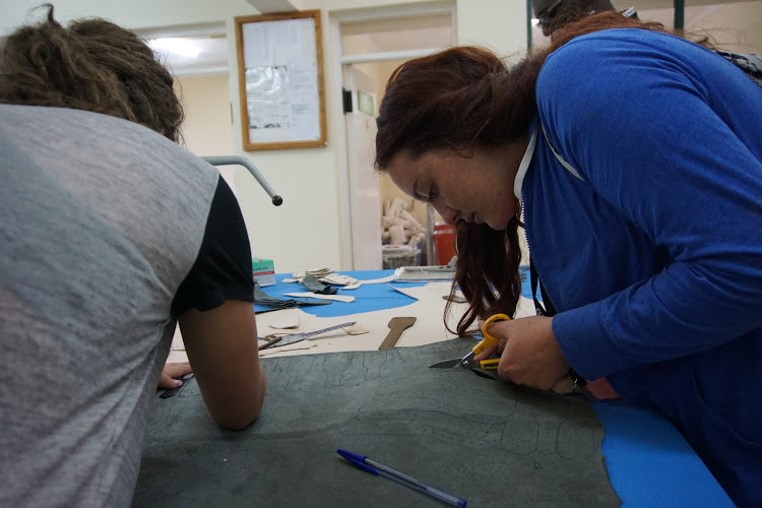Clubfoot is a completely curable birth defect – but only for children with proper treatment. For many kids in developing countries, a lack of access to quality medical treatment to fix clubfoot could lead to a lifetime inability to walk.
Maya Roberts, a third-year biomedical sciences major at CSU, first learned about clubfeet when her sister was born with the defect.
“The doctor said she was lucky to be born in the U.S. because many children in India can’t walk after a few years,” she said. “I wanted to fix this. I was 9 years old and super passionate about clubfeet.”
After hearing this, Roberts became frustrated with the inequalities in clubfoot treatment, and she’s wanted to tackle the issue ever since.
She also observed problems when working at a Kenyan hospital in 2016. She noticed there weren’t any across-the-board treatment plans among the different hospitals.

Roberts (second from left) working at a clubfoot hospital in Kenya. Photos by Maya Roberts.
“Clubfoot isn’t a huge issue people talk about,” she said. “The only reason no one is doing anything is because it’s not an issue in the U.S. It’s such a fixable problem, but half of the kids are relapsing in developing nations.”
The treatment of clubfoot oftentimes requires the Ponseti method, a gradual and gentle casting of an infant’s feet to manipulate foot muscles to the correct position. The process can require weekly casting over the course of several months.
In many developing nations, families will appear for initial casting or surgery but never return for the remaining procedures required. Many don’t return to hospitals due to high costs, a lack of resources and time, or the stigma of wearing a cast. Kids won’t go to school with casts, and the plaster casts will become completely damaged if they get wet. All of these situations will cause kids to relapse and can cause lifetime impacts on their walking ability.
“Why aren’t we making an adjustable and waterproof brace?” Roberts asked. “Why can’t we put the treatment back into the parents’ hands? How can we make something that can decrease costs and the social stigma of wearing a cast? These are problems I think I can fix.”

A goal from the beginning
Roberts arrived at CSU in 2017 with the goal of focusing her research on clubfoot treatment methods for developing nations, and hoped to create a device that could be implemented throughout international communities. Through the Honors Undergraduate Research Scholars program, she was set up with Kirk McGilvray, an assistant professor of mechanical engineering.
“Maya came to me very passionate and involved with some ideas about clubfoot treatments,” McGilvray said. “Mechanical engineering with orthopedic research is what I do. After doing a deep dive on the literature, we found there was little being done in developing nations, and her project would be at the forefront of the medical problem.”
Roberts began her project by studying the movements required to correct a clubfoot. After building several prototypes, she used a 3D printer to create a waterproof model that includes springs and adjustable dials. The prototype allows parents to abduct the brace themselves, and children can go from weekly casting appointments to replacing the braces every four to five months.
“Kids and families won’t ask, ‘Do I go to school or get my foot fixed?’” Roberts said. “That’s the goal. It seems feasible.”

Roberts looks forward to bringing the prototype to a club foot hospital in the African country of Malawi this summer.
“The plan is to have a solid prototype before I leave, and see what I can do with what’s available in Malawi,” Roberts said. “I’m trying to make it as cheaply and effectively as possible, and see if it’s workable for the people in these countries.”
The prototype project has become Roberts’ zeal, and the dream that she has had since age 9 is beginning to come to fruition.
“This is feel-good engineering,” McGilvray said. “The technology isn’t difficult, but the implementation is a challenge. It feels good to be helping, and it’s an issue we think we can solve.”
“It all started with me just asking questions,” Roberts said. “Now I might have a solution to this problem.”